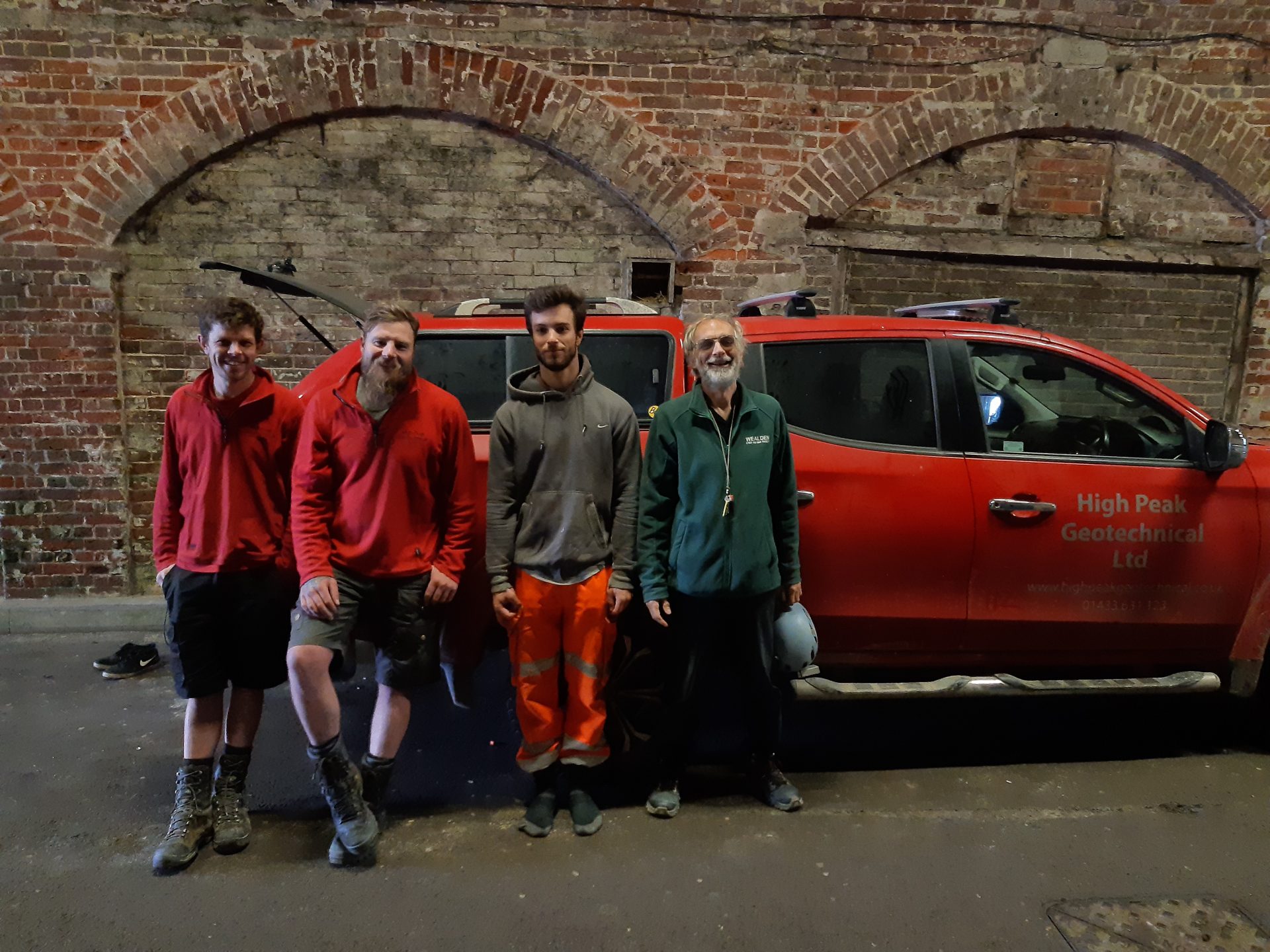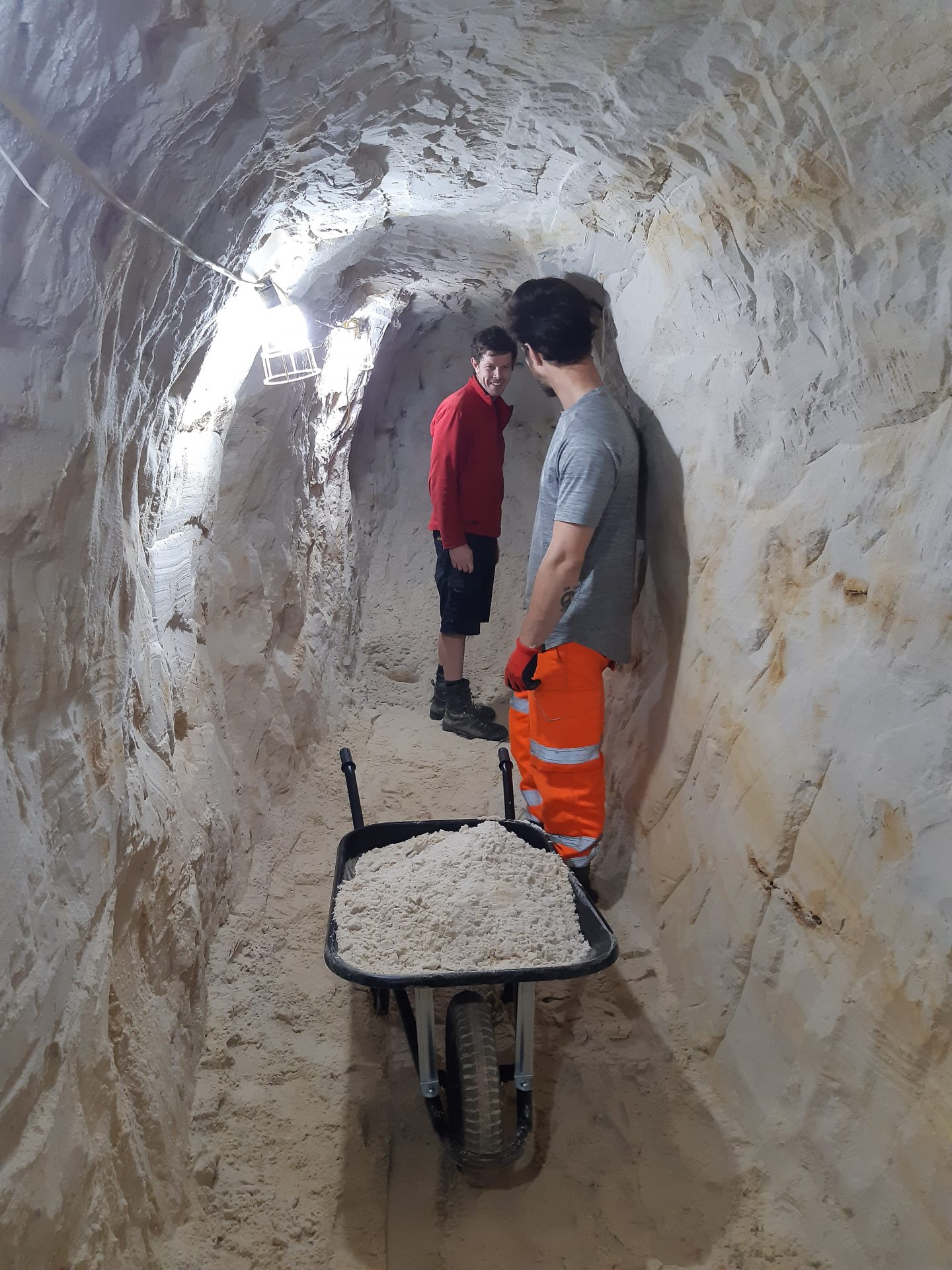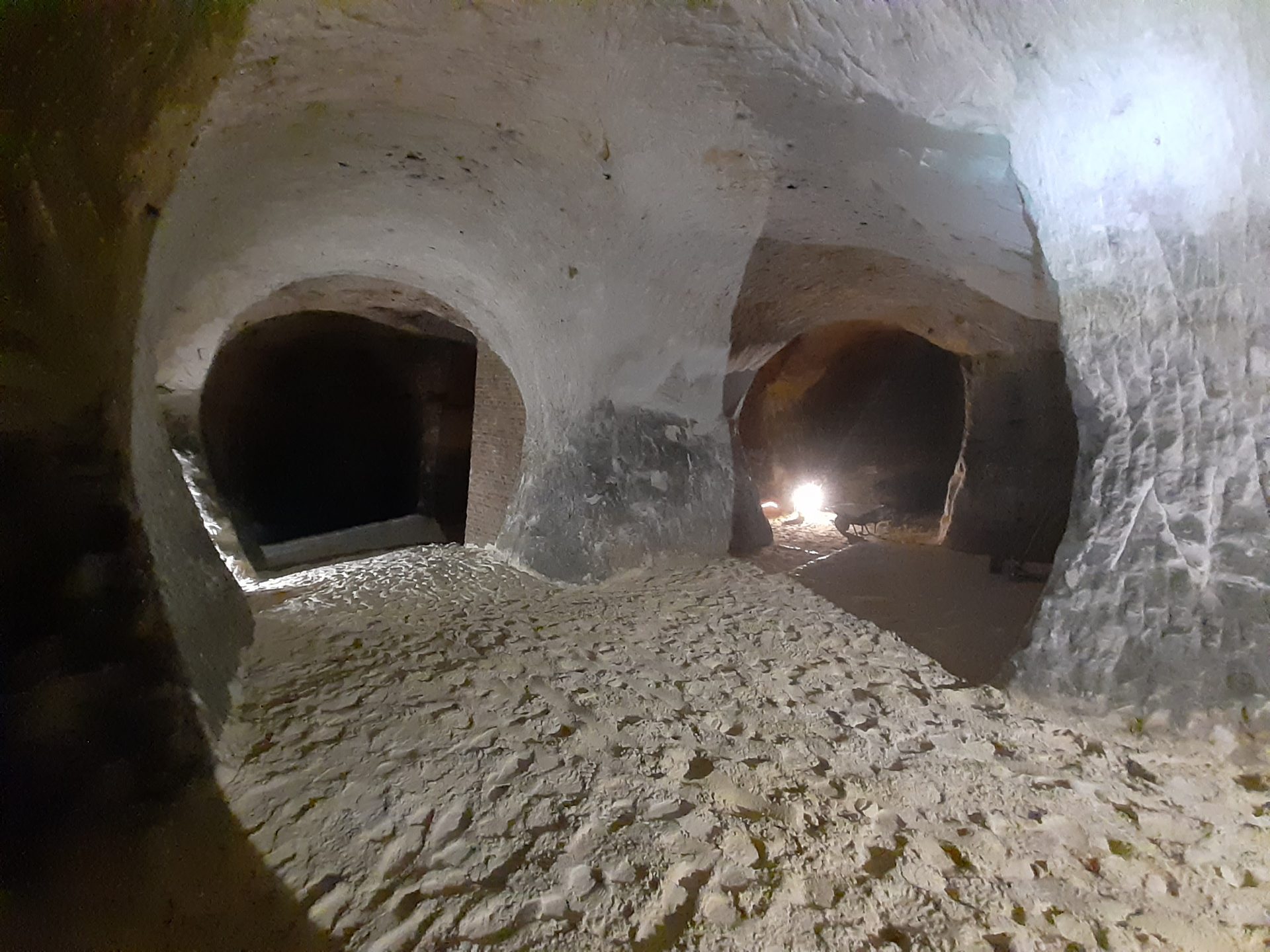
Reigate has a brand new tunnel, thanks to the efforts of High Peak Geotechnical Ltd., acting on instruction from the Wealden Cave and Mine Society (WCMS). WCMS opens three caves within the centre of Reigate, Surrey, for public tours, under licence from Reigate and Banstead Borough Council. One of the three caves is an abandoned sand mine, and this fact places WCMS under an obligation to comply with the legislation within the Mines Regulations, 2014. This is because conducting guided tours of a mine for a fee, even though the mine is no longer producing mineral, renders the mine operational, and subject to Health and Safety Legislation, with many safety requirements similar to those of a fully operational mineworking.
The “caves” in Reigate are all cut into the soft silver sand that underlies the town centre. They comprise a fascinating collection of storage cellars for beer, wine etc, a Medieval tunnel under the mound of the Norman castle, or old sand mines, excavated from the 17th or 18th century until the beginning of the 20th century. Of the three caves operated by WCMS, only one, the Tunnel Road West cave is considered to be a former mine from which mineral was removed. An inspection by a representative of the Mines Inspectorate in 2018 resulted in a number of recommendations to be carried out, such as radon measurements, provision of an emergency exit, and emergency lighting. However, the most significant recommendation was that one section of the old mine, only accessible via a single linking tunnel, required an alternative way out in the event of an emergency.
A little background will help here, in order to understand how one section of the system became almost isolated from the rest of the sand mine tunnels. Tunnel Road West caves were formed by sand-mining, using the classic pillar and stall extraction process, until the operations were ended abruptly in 1858 by a sudden collapse of the entire central section one evening in January of that year. All around the collapse, the galleries survived, and access remained possible, albeit by scrambling over the edge of the fallen debris in a couple of places. What remained was stabilised in the 19th century with substantial brick walls and a few new tunnels, and the site was later adapted for other uses, such as storage, and as a rifle range in the 20th century. In the Second World War a substantial air-raid shelter was set up in the caves.
In the 1980s, Reigate and Banstead Borough Council commissioned surveyors to discover the location and extent of all the sand caves under Reigate, and to identify where any instability might cause a risk to the public. The result of this was that the Tunnel Road West caves, along with some other places under the town, were either infilled or further stabilised under a Government-funded scheme to address mining instability in the UK. The recommended work in the Tunnel Road West caves resulted in the innermost section of the old mine-workings being cut off by extra infilling and insertion of block walls, and in order to maintain access for future inspections, a connector tunnel was dug linking the rear section of the caves to the main section. It is through this tunnel that public tours take place on open days run by WCMS.
The challenge now was to identify the best place to dig a new safety connection, and to obtain all the required permissions to carry out the work. It was fortunate that a convenient route for the tunnel would only be little over 15 metres in length, and it would also restore access around the collapsed central section, something that was lost after the Council’s stabilisation work. It was deemed prudent, for public liability reasons, to employ a professional team to undertake the work, although there were a number of WCMS members who would have gladly got stuck in to create the new route! It was also a wise move to use a contractor familiar with mining regulations and who could be trusted to complete the work safely and without complication.
Apart from arranging for the physical excavation of the required tunnel, it was also necessary to obtain Scheduled Ancient Monument consent for the work. This is because almost all the cave lies directly beneath the scheduled Reigate Castle, and the statutory protection not only affects any surface structures and features, but also everything that lies beneath it, including the 19th century sand mine. It was fortunate that an archaeological assessment of the caves had been previously done in 2003, before the first public tours, since it was necessary to remove a large amount of broken glass from the sandy floor to create a safe tourist route. As the new tunnel was to be dug in the same location, Historic England deemed the 2003 assessment sufficient to cover the new tunnel work, and permission to continue was granted, following a simple inspection by a member of the Surrey County Archaeological Unit.

In mid-October, 2021, the work started. Each day, there were members of WCMS present to advise and help the High Peak Geotechnical team with the work. The sand dug from the new tunnel was spread over the area where much broken glass and other debris had been dumped before the caves were preserved as a valuable local amenity, and appreciated for their historic value. Work continued most days from 7am until after 6pm, and was completed after 7 days of hard work.
The new tunnel was unlined, using the example of the existing tunnels still standing solid after more than 150 years. The old galleries are up to 4m or more high, and up to 4m wide; the new tunnel is only 2m high, and 1.2 m wide. Nevertheless, an impressive volume of sand was removed and had to be disposed of. Digging the sand proved educational. An electric breaker was the tool used, and an average of about 3m of new tunnel were dug each day. The sand wall peeled away like cheese unlike digging in harder material, but this meant much more effort was required each day to shovel up the sand and barrow it away. The same team had previously worked on a similar tunnel in Kent, but in chalk, where they might manage only half a metre of completed tunnel each day.

The spoil was used to greatly improve the mine for visitors. A membrane was laid over much of the broken glass and debris, to separate it from the new material, and to prevent any of it migrating up into the clean sand. There is now a much more extensive area where it is safe to walk, and the cleaner and tidier nature of the tunnels makes the place more closely resemble a sand mine than a rubbish dump. There was just about enough room to spread the sand around and level it out, containing it in places using sandbags, and the height of the galleries remains impressive.
A few of the peripheral areas have been left untouched which means visitors can still see the sort of things that used to be lying around. The original proposed route for the new tunnel was changed slightly to maintain good roof support, and the team were very efficient in their calculations and completed the tunnel in exactly the right spot, and only 15 cm adrift vertically, a step easily lost by grading the floor level.

The High Peak Geotechnical team, comprising Mark Noble, Rob Shore, James Wood and Jacob Richardson, were highly professional and courteous from start to finish, and are to be congratulated on an excellent job. Graham Daws provided the required geotechnical reports, and funding was provided from WCMS reserves, aided by a generous £5000 grant from Subterranea Britannica.
WCMS are very pleased with the result, and it is now possible to run a circular tour through the caves which will be safer and more efficient than in previous years. Cave tours will resume in May 2022, with one open day each month until September. Visit reigatecaves.com for more information on the caves and tours.
For more information on other projects completed by High Peak Geotechnical, visit their website.
Correspondent: Peter Burgess
